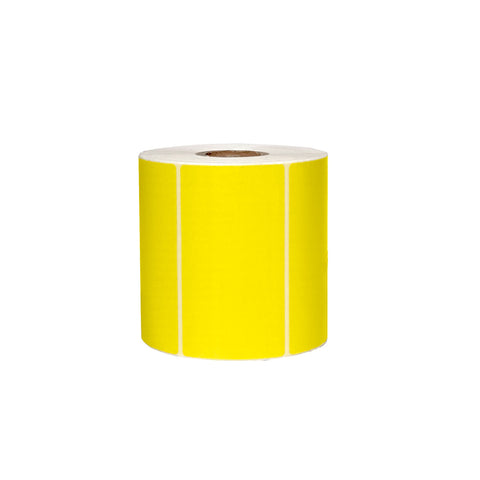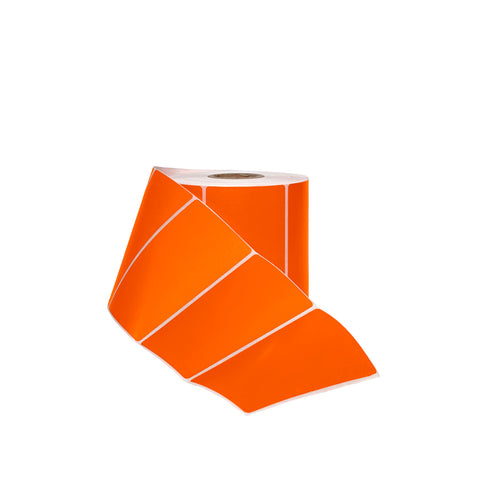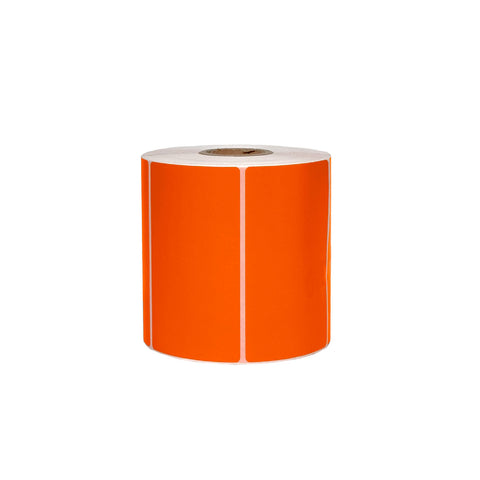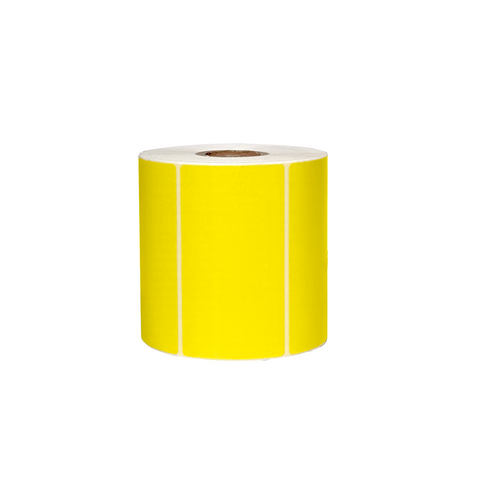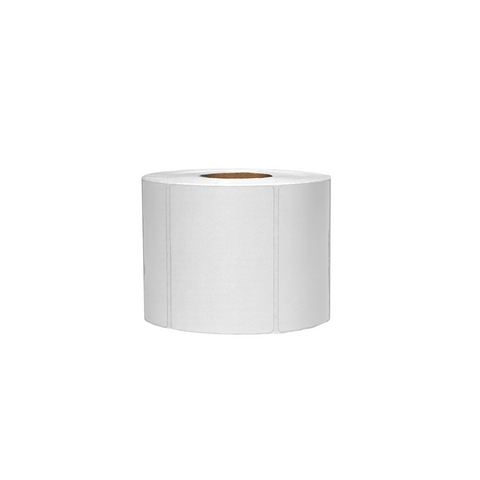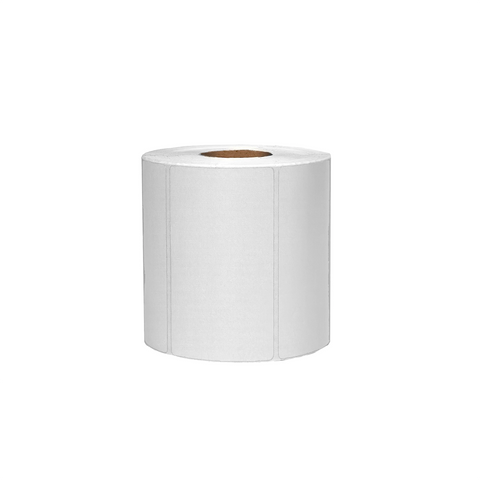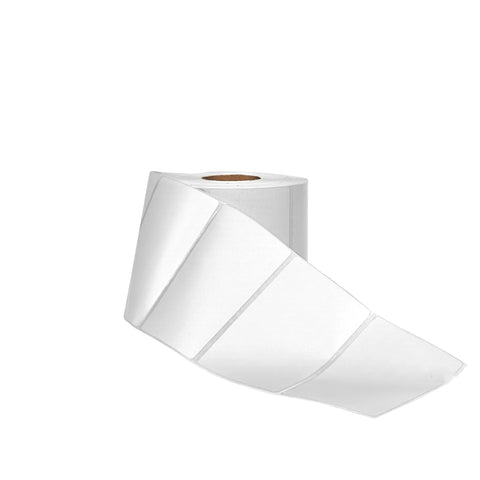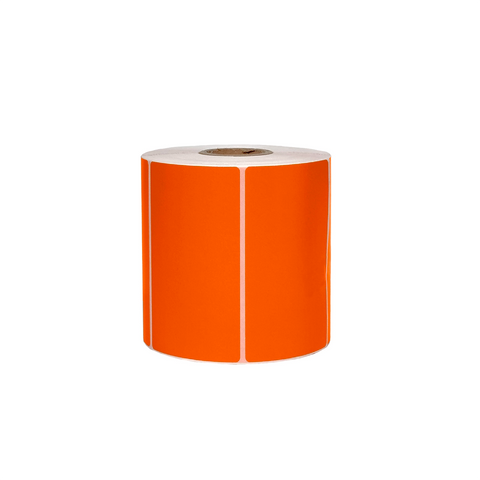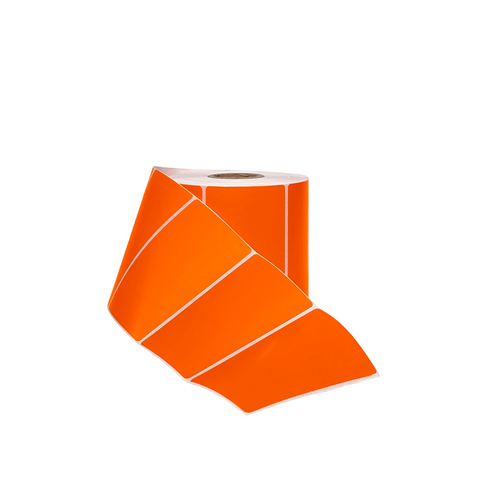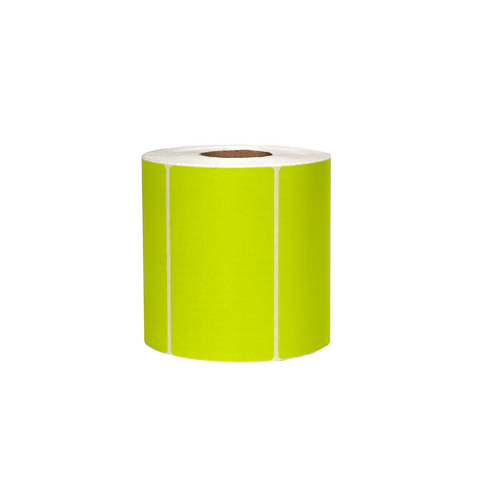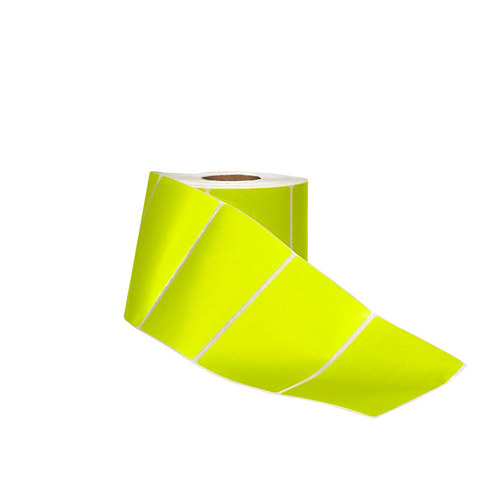Explore More About Thermal Labels
Thermal labels have become the backbone of modern shipping, inventory management, and retail operations. These specialized labels work with thermal printers to create crisp, professional text and barcodes without requiring ink or toner, making them an essential tool for businesses of all sizes.
Direct thermal labeling is a method that uses heat to create images on a special kind of paper. This thermal paper has a thermochromic coating that reacts to heat, turning black when heated, which eliminates the need for a thermal ribbon. This innovative technology has revolutionized how businesses approach labeling tasks across various industries.
When a thermal printer applies heat to specific areas of the label, the coating darkens to form text, numbers, or barcode patterns. This process creates durable, legible labels that serve multiple business purposes without the ongoing costs associated with traditional printing methods.
Size Considerations
Select label dimensions based on your specific needs. Smaller labels work well for individual product identification, while larger formats accommodate detailed shipping information or multiple data elements.
Color Selection
Standard white labels suit most applications, while colored options provide visual organization benefits. Choose colors that align with your categorization system or brand requirements.
Adhesive Properties
Permanent adhesive labels work best for long-term applications, while removable options offer flexibility for temporary uses. Consider your specific application requirements when making this choice.
Thermal Label Compatibility
Modern thermal labels work with various printer brands and models, ensuring broad compatibility across different business environments. Non top coated labels have a plain matte facesheet suitable for short-term applications such as shipping and barcoding. They are also more cost-effective.
Thermal labels represent a practical solution for businesses seeking reliable, cost-effective labeling options. Their versatility, combined with the elimination of ongoing ink costs, makes them an intelligent investment for operations requiring consistent, professional labeling.
Whether you're managing a small retail operation or running a large distribution center, thermal labels provide the reliability and efficiency needed to streamline your labeling processes while maintaining professional standards throughout your operations.
Cost Efficiency
Thermal printing eliminates ongoing costs for ink cartridges or ribbons. Once you invest in a thermal printer, the only recurring expense involves purchasing label rolls, making this technology highly economical for high-volume operations.
Speed and Convenience
Direct thermal labels are compatible with Zebra, Bixolon, Citizen, Datamax, Honeywell, Intermec, Rollo, Sato, and TSC printers. This wide compatibility ensures businesses can integrate thermal labeling into existing systems without major equipment changes.
Professional Results
Thermal labels produce sharp, clear text and barcodes that scan reliably. The consistent quality ensures professional presentation while maintaining functionality across various applications.
Shipping and Logistics
Primary uses for direct thermal printing are "Point-A-to-Point-B" applications, such as baggage checking in airports, or parcel delivery. UPS.com (including CampusShip) is compatible with most thermal label printers that will print 4" x 6" labels. This makes thermal labels the industry standard for shipping operations.
Retail and Inventory Management
This makes them ideal for short-term applications, such as labeling perishable goods in bakeries, delis, convenience stores, or for shipping and event tickets. Retailers use thermal labels for price tags, product identification, and inventory tracking systems.
Warehouse Operations
Distribution centers rely on thermal labels for organizing inventory, tracking shipments, and managing stock levels. The durability and scan-ability of thermal labels ensure smooth warehouse operations.
Our packaging solutions reach businesses and private individuals right across Australia, with complimentary delivery throughout Sydney Metro and Campbelltown on orders over $100. This streamlined approach to procurement ensures cost-effective access to professional packaging, whether you're operating from the CBD through to Campbelltown's growing commercial precinct.
Warehouse collection available from Campbelltown Monday-Friday, 9:00am-4:30pm. Call 1300 531 930 or email info@neonpackaging.com.au for quotes and enquiries – we're here to help with your packaging needs.
What are thermal labels?
Thermal labels are special paper labels that react to heat from thermal printers to create text, barcodes, and images. They don't require ink or toner - the heat activates a coating on the paper that turns black when heated.
Do thermal labels need ink?
No ink needed. Direct thermal printing uses heat to create images on the label surface, eliminating ongoing costs for ink cartridges or ribbons.
What sizes are available?
Multiple sizes suit different needs:
Small white labels: 0.99cm x 1.48cm ($5.35 inc. GST)
Standard colored labels: 7.5cm x 4.5cm ($3.55 inc. GST)
Removable options: Various sizes ($4.65 - $8.00 inc. GST)
Which printers work with thermal labels?
Compatible with most major brands including Zebra, Bixolon, Citizen, Datamax, Honeywell, Intermec, Rollo, Sato, and TSC printers.
What colors are available?
Standard white plus bright colors for organization:
Yellow thermal labels
Orange thermal labels
Green thermal labels
All colored options available in permanent and removable versions
Are removable thermal labels reusable?
Removable labels peel off cleanly without leaving residue, making them perfect for temporary applications like event tickets, seasonal inventory, or short-term product labeling.
How long do thermal labels last?
Standard thermal labels work well for shipping and short-term applications. For longer-term storage, keep them away from heat and direct sunlight to prevent fading.
What are thermal labels used for?
Common applications include:
Shipping labels and package tracking
Inventory management and warehouse organization
Retail price tags and product identification
Event tickets and temporary labeling
Can I print barcodes on thermal labels?
Yes, thermal labels produce sharp, scannable barcodes that work reliably with barcode readers and scanning systems.
Are thermal labels cost-effective?
Very economical for high-volume operations since there's no ongoing ink costs. You only need to purchase label rolls after the initial printer investment.
Do thermal labels work for food products?
Perfect for bakeries, delis, and convenience stores where short-term labeling is needed. The labels handle typical food service environments well.
Can thermal labels handle shipping conditions?
Designed for shipping applications, they resist normal handling and weather conditions during transit while maintaining readability.




